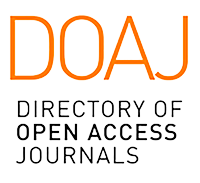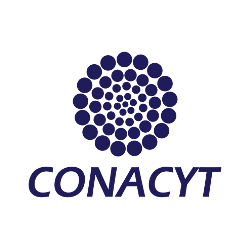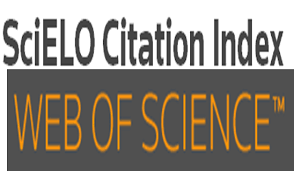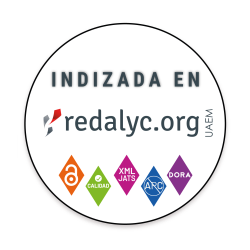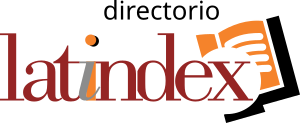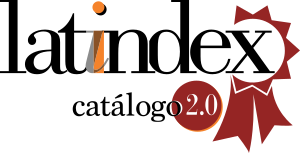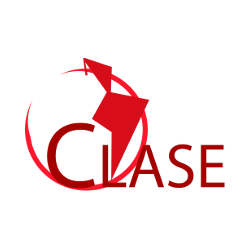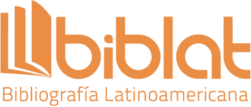I. Requisitos para la presentación de originales
1. Los envíos deben hacerse vía OJS (https://www.analesiie.unam.mx/index.php/analesiie/user/register)
2. Las colaboraciones deberán ser originales e inéditas, así como relevantes para su disciplina.
3. Una vez confirmada la recepción del texto, se somete a la herramienta para la detección de coincidencias y similitudes iThenticate.
4. Después de la evaluación positiva del sistema, los editores de la revista determinarán su pertinencia temática según el enfoque editorial de la revista. Favor de confirmar que su texto se adapte a dichas líneas de investigación (véase www.analesiie.unam.mx/index.php/analesiie/alcance)
5. Se aceptan textos en español, inglés, francés y portugués. Los autores que deseen enviar un texto en algún otro idioma, favor de contactar a los editores.
6. El archivo de Word deberá estar a doble espacio, con márgenes de tres centímetros y deberá tratarse de la versión definitiva del texto.
7. La primera página debe contar con el título y subtítulo del artículo en inglés y español, el nombre del autor, adscripción, correo electrónico, ORCID, líneas de investigación (en español e inglés) y publicación más relevante. Asimismo, debe incluirse un resumen, tanto en español como en inglés, del contenido del artículo con un máximo de 140 palabras, así como de 5 a 7 palabras clave (keywords) para la identificación del contenido.
8. Al inicio del texto debe incluirse nombre y adscripción del autor o autores. Todas las divisiones o secciones se señalarán con cabezas alineadas a la izquierda y separadas del texto por una línea previa y una línea posterior. Las citas textuales mayores a cinco líneas deben transcribirse en un párrafo aparte, sin modificar la interlínea general, y en un puntaje menor. Los llamados a notas a pie de página se compondrán en números arábigos volados, ordenados consecutivamente, y se colocarán después de los signos de puntuación.
9. Una vez que el artículo esté en el proceso de revisión de primeras pruebas, la Universidad Nacional Autónoma de México solicitará que los autores firmen un formato de cesión de derechos de autor a fin de que la revista pueda editar, publicar y difundir su artículo en papel, medios electrónicos o cualquier otra tecnología, según un protocolo de fines científicos y culturales sin ánimo de lucro.
10. Los autores deberán revisar tanto las primeras pruebas (con el fin de dar su visto bueno a la corrección de estilo, y corroborar la secuencia correcta de las imágenes y sus pies de ilustración), así como las pruebas finales. En ningún caso se aceptarán modificaciones mayores al texto.
II. Tipos de colaboraciones que recibe Anales del Instituto de Investigaciones Estéticas
Artículos
Se recibirán todos los artículos de investigación académica originales e inéditos que correspondan a la orientación temática de la revista, y que presenten perspectivas, análisis de casos o problemas teóricos innovadores.
Con una extensión entre 9,000 y 12,000 palabras como máximo (incluyendo las notas), los artículos serán dictaminados de forma anónima por dos especialistas en el tema. Sólo se aceptará material derivado de una tesis doctoral si se ha reestructurado argumentalmente el texto en formato de artículo.
Obras documentos
En esta sección se publican hallazgos interesantes para la investigación, es decir, primeros acercamientos a un tema antes de publicarse como artículo de investigación o libro. Se trata de documentos, reproducciones de obras de arte desconocidas o restauradas; información sobre instituciones de nuestra disciplina (archivos, organizaciones, institutos, entre otras) y sus programas; tendencias académicas, políticas culturales (de museos, institutos de restauración, etcétera). Los textos serán dictaminados de forma anónima por dos especialistas en el tema.
La extensión puede oscilar entre 2,500 y 6,250 palabras.
Semblanzas
En este apartado se publican homenajes u obituarios de intelectuales distinguidos en nuestro campo disciplinar, tanto de nuestra universidad, como de todo el mundo. Los textos serán dictaminados de forma anónima por un especialista en el tema.
La extensión puede oscilar entre 750 y 2,500 palabras.
Reseñas
En esta sección se publican reseñas de libros sobre historia y teoría del arte, diseño, arquitectura y urbanismo, mismas que analizan el libro en su totalidad.. Los textos serán dictaminados de forma anónima por un especialista en el tema. De conformidad con las políticas de la revista no se publican reseñas de libros editados por nuestro propio instituto (IIE), pues se considera que no serían del todo objetivas. La extensión varía entre 750 y 2,500 palabras, salvo casos especiales a someter al Comité Editorial.
III. Lineamientos
Aparato crítico
1. El aparato crítico (el conjunto de citas, referencias y notas a pie de página que dan rigor y solidez al texto) debe seguir los lineamientos establecidos por The Chicago Manual of Style, cuya guía rápida puede consultarse en: https://www.chicagomanualofstyle.org/tools_citationguide/citation-guide-1.html
2. Las referencias bibliográficas deberán incluir: autor (nombre y apellidos en altas y bajas), Título del libro (ciudad: editorial, año), páginas citadas; por ejemplo: Ernst Hans Gombrich, Arte e ilusión. Estudio sobre la psicología de la representación pictórica, trad. Gabriel Ferrater (Madrid: Debate, 1998), 286.
3. Cuando se trate de la obra de más de un autor, todos deberán mencionarse, si superan los siete irán seguidos de et al.
4. En el caso de citar un capítulo de algún libro: autor, “nombre del capítulo”, en autor, Título del libro (ciudad: editorial, año), páginas citadas; por ejemplo: Jorge Sebastián Lozano, “Veritas Filia Temporis: Gombrich y la tradición”, en ed. Paula Lizárraga, H. Gombrich, in memoriam (Pamplona: Ediciones Universidad de Navarra, 2003), 387-406.
5. Las referencias hemerográficas deberán incluir: autor, “Título del artículo”, Nombre de la Publicación (en altas) número del volumen, número (fecha de publicación): páginas citadas; por ejemplo: Francisco Egaña Casariego, “Joaquín Vaquero Palacios en Nueva York”, Archivo Español de Arte 86, núm. 343 (2003): 237-262. Cuando se trate de un diario: Autor, “título del artículo”, Nombre del Periódico, volumen, número, sección, fecha, año, página; por ejemplo: Teresa del Conde, “Naturaleza herida: González Serrano”, La Jornada, vol. 54, núm. 24, secc. Opinión, 20 de agosto, 2013, 12.
6. Las referencias a documentos en archivos se presentarán de la siguiente manera: nombre completo del repositorio, la primera vez que se cite y, entre paréntesis, las siglas que se utilizarán posteriormente, localización interna del documento, emisor, “Título del documento”, fecha, libro y fojas consultadas, por ejemplo: Archivo del Cabildo Catedral Metropolitano de México (en adelante ACCMM), Actas de cabildo, Ordo, "Diario manual de lo que en esta Santa Iglesia Catedral Metropolitana de México se practica y observa", 1751, lib. 2, f. 3.
7. Las páginas web se citarán como sigue: nombre del autor, “título”, liga directa al texto (consultado y la fecha), ejemplo: Rocío Robles Tardío, “La metáfora y la huella del ferrocarril en la formulación de la vivienda moderna en Le Corbusier”, dialnet.uniroja.es/servlet/ejemplar?codigo=339925 (consultado el 30 de octubre, 2013).
8. Para las referencias filmográficas: director, Título de la película (lugar: casa productora, año), duración; ejemplo: Federico Fellini, La dolce vita (Roma/París: Riana Film/Pathé Consortium Cinéma, 1960), 174 min.
9. Las referencias a grabaciones sonoras se formularán de la siguiente manera: nombre del compositor, Título, director, casa discográfica, año, por ejemplo: Silvestre Revueltas, Tragedia en forma de rábano (no es plagio), Enrique Diemecke, Gramophone, 1990.
Ilustraciones
1. Se enviará un máximo de 12 imágenes cuando se trate de un artículo y de 6, cuando el texto pertenezca a la sección "Obras, documentos".
2. Habrá de mandarse un archivo de Word como referencia con las imágenes y sus pies correspondientes numerados conforme a su aparición en el texto, con el fin de enviarlo a los dictaminadores.
3. Una vez aceptado el artículo las imágenes deben mandarse en alta resolución a: analesiie@gmail.com.
4. Las imágenes deben cumplir con los siguientes requisitos: a) fotografías y medios tonos: en 300 dpi, formato .tif y de 14 cm de ancho; b) dibujos a línea (mapas, planos, partituras, esquemas, diagramas): en 1200 dpi, formato .tif y de 14 cm de ancho.
5. Las digitalizaciones de libros o revistas deben entregarse en 600 dpi, en formato .tif y de 14 cm de ancho.
6. Es importante cuidar que las imágenes cumplan con los requisitos generales, tales como: nitidez, definición y buen encuadre, para que éstas alcancen una buena calidad.
7. Pies de ilustración: la numeración irá acorde con los nombres de los archivos entregados, seguida de: autor, título de la obra, fecha, dimensiones, ciudad. Fuente o acervo. Crédito fotográfico © o a quien correspondan los derechos patrimoniales de la imagen para edición en papel y electrónica.
8. Permisos de reproducción: el autor deberá remitir por escrito los permisos de reproducción de las ilustraciones que así lo requieran, tanto para la edición impresa como para la edición en línea. Únicamente cuando el Instituto tenga convenios interinstitucionales los permisos podrán ser tramitados por el área jurídica del Departamento de Publicaciones.
